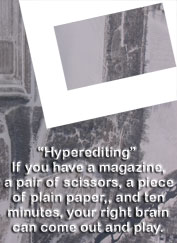.
Yet another interesting Smithsonian article -- this one is about a Roman goblet that changes color depending on how it's lit (and on what it's filled with), and about modern possibilities for using the technology that produced the glass the goblet was made of!
Update (8/26/13) -- After I finally got off the computer yesterday, I was watching tv while I brushed my teeth. I happened across a NOVA program on making stuff smaller.
One of the topics was the way nanoparticles of silver and gold reflect light differently than does a much bigger piece of either metal (like a coin). He talked about the effect of nanoparticles of silver and gold in the making of stained glass, and a Canterbury Cathedral restoration expert demonstrated mixing extremely fine-ground silver particles with clay, painting them carefully on a piece of glass, firing the result in a kiln, rubbing off the clay, and, hey presto, the lady's hair she'd painted was blonde.
We were told there is exactly one shop in Great Britain and Ireland that makes glass as it was made in medieval times. To get yellow with silver requires not only the proper preparation of silver, and the proper firing, but the proper glass to paint the silver-and-clay on in the first place! Some of the glass has the nanoparticles right in the glass -- they showed someone making pink glass that had gold in it. Much medieval stained glass has painted images of people (Biblical characters and saints, usually). That painting is the "stain" in "stained glass".....
Another interesting thing is that the shape of the nanoparticles affects the color. We were shown little vials that all had silver nanoparticles in water, and there were several different colors, depending on whether the nanoparticles were spherical, triangular, rectangular.....
So many fascinating things out there to learn about!
I'll think about nanoparticles the next time I'm looking at medieval stained glass!
.
Subscribe to:
Post Comments (Atom)

















No comments:
Post a Comment